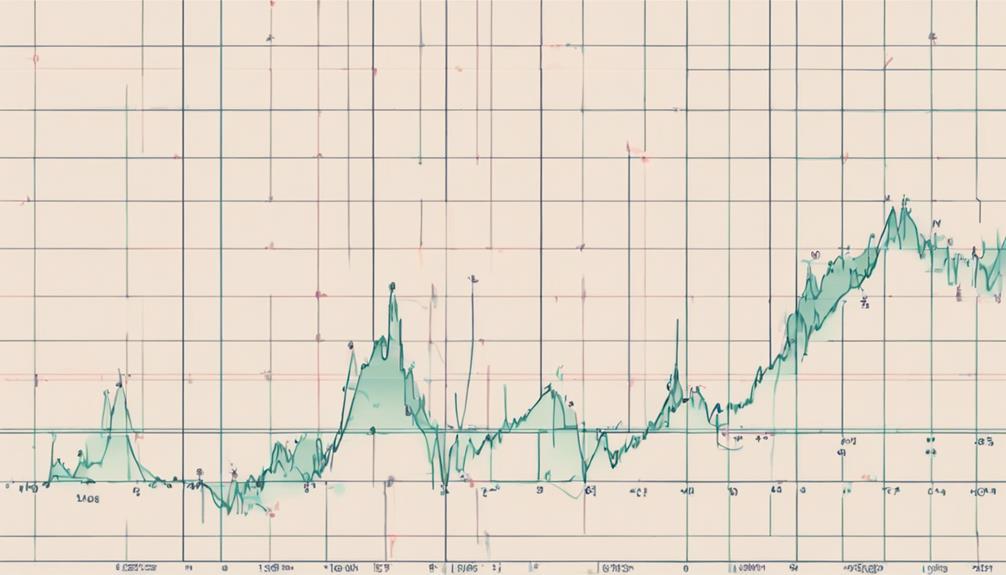When navigating the intricate waters of Hong Kong stock investments, envision currency risk management as a compass guiding your financial journey.
Through the implementation of strategic practices, you can navigate the volatility of foreign exchange rates and safeguard your investments against potential fluctuations.
By incorporating these three best practices tailored to Hong Kong's unique market dynamics, you can enhance your investment portfolio's resilience and optimize returns.
Explore how these practices can empower your investment strategy and elevate your financial acumen in the dynamic landscape of Hong Kong stock investments.
Diversify Currency Exposure
To effectively manage currency risk in Hong Kong stock investments, you should consider diversifying your currency exposure by investing in multiple currencies. Currency fluctuations can significantly impact your investment returns, making it crucial to spread risk across various currencies.
By holding assets denominated in different currencies, you can enhance the resilience of your portfolio, especially in a volatile market environment like Hong Kong stocks.
Currency diversification helps reduce vulnerability to fluctuations in a single currency, thus safeguarding your investment against unforeseen risks. Investing in currencies with strong fundamentals can further fortify your portfolio against market uncertainties.
By spreading your investment across multiple currencies, you can better position yourself to weather currency fluctuations and optimize your overall risk-adjusted returns in the Hong Kong stock market.
In essence, diversifying your currency exposure is a prudent strategy to mitigate the impact of exchange rate movements on your investments and enhance the stability of your portfolio in the face of market fluctuations.
Utilize Currency Hedging Strategies

Consider incorporating currency hedging strategies when managing currency risk in your Hong Kong stock investments. Currency hedging strategies involve using financial instruments such as forward contracts, options, and currency-hedged ETFs to protect against currency fluctuations.
By employing these strategies, you can reduce the impact of exchange rate movements on your investment returns. The primary goal of currency hedging is to stabilize returns and minimize losses attributed to currency volatility. Properly executed hedging strategies not only help in risk management but can also enhance your overall portfolio performance.
When implementing currency hedging, it's essential to assess your risk tolerance, investment objectives, and the specific characteristics of the assets in your portfolio. By actively managing currency risk through hedging, you can better position yourself to navigate the uncertainties of the foreign exchange market and safeguard your Hong Kong stock investments from potential currency-related losses.
Monitor Exchange Rate Trends

Keep a close watch on exchange rate trends by monitoring the HKD/USD and HKD/CNY rates to stay informed about potential impacts on your Hong Kong stock investments. The HKD/USD exchange rate is pegged within a band of 7.75 to 7.85, so fluctuations in the USD can affect the HKD peg and Hong Kong's currency stability.
Additionally, due to Hong Kong's close economic ties with China, it's vital to keep an eye on the HKD/CNY exchange rate. Analyzing historical movements in these exchange rates can help you anticipate potential shifts and their impact on your investments.
Stay informed about global economic events as they can significantly influence exchange rate trends in Hong Kong. By actively monitoring these factors, you can better manage currency risk associated with your Hong Kong stock investments and make informed decisions regarding currency management strategies.
– What Are Some Effective Currency Risk Management Techniques for Hong Kong Stock Investments?
When investing in Hong Kong stocks, it’s essential to employ strategies to curtail currency risk. One effective technique is to use currency hedging instruments such as forwards or options. Additionally, diversifying across different currencies can help mitigate the impact of fluctuations on your investment portfolio.
Frequently Asked Questions
What Is Currency Risk Management?
Currency risk management involves understanding hedging, risk exposure, currency fluctuations, and exchange rates. Strategies like portfolio diversification and currency hedging are key for risk mitigation. By utilizing effective hedging strategies, you can navigate market volatility and protect your investments.
How Do Banks Manage FX Risk?
To manage FX risk, you hedge with derivatives like forwards, options, and swaps to offset exposure. Consider factors such as volatility, interest rates, and market conditions. Mitigate risks, protect capital, and assess fluctuations effectively.
How Do Businesses Assess and Manage Financial Risks Such as Interest Rate Risk Foreign Exchange Risk and Credit Risk?
Assess and manage financial risks by analyzing risk exposure and tolerance. Mitigate risks through hedging strategies and financial instruments. Monitor risks, diversify, and set credit limits. Stay proactive in managing currency fluctuations and credit defaults.
What Is the Currency Exchange Risk Assessment?
When assessing currency exchange risk, consider factors like exchange rate movements, market volatility, and risk tolerance. Analyze currency exposure, then develop a hedging strategy or diversify your portfolio across currencies to mitigate potential losses.
Conclusion
In the wild world of Hong Kong stock investments, navigating currency risks is like taming a fickle dragon.
By diversifying your currency exposure, utilizing smart hedging strategies, and keeping a close eye on exchange rate trends, you can steer clear of financial fire-breathing.
Stay alert, stay strategic, and let your investments soar high above the currency storm clouds. Happy investing!
